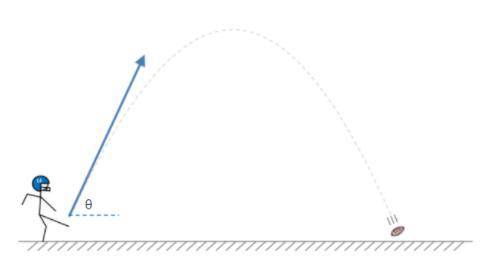
A punter wants to kick a football so that the football has a total flight time of 4.70s and lands 57.0m away (measured along the ground). Neglect drag and the initial height of the football.
- How long does the football need to rise?
- What height will the football reach?
- With what speed does the punter need to kick the football? (vertical component, horizontal component, and vector magnitude)
- At what angle (θ), with the horizontal, does the punter need to kick the football?


Answers: 2


Other questions on the subject: Physics

Physics, 22.06.2019 07:50, bckyanne3
2. -/1 pointsserpse10 2.7.p.017.mi. an object moving with uniform acceleration has a velocity of 14.0 cm/s in the positive x direction when its x coordinate is 2.97 cm. if its x coordinate 2.85 s later is -5.00 cm, what is its acceleration? cm/s2 need ? read it master it
Answers: 1

Physics, 22.06.2019 15:00, weridness80
For waves in the ocean, the medium of the waves is a. air b. water c. energy d. a passing boat
Answers: 1

Physics, 22.06.2019 15:30, Mhayslett12
To understand the electric potential and electric field of a point charge in three dimensions consider a positive point charge q, located at the origin of three-dimensional space. throughout this problem, use k in place of 14? ? 0. part adue to symmetry, the electric field of a point charge at the origin must point from the origin. answer in one word. part bfind e(r), the magnitude of the electric field at distance r from the point charge q. express your answer in terms of r, k, and q. part cfind v(r), the electric potential at distance rfrom the point charge q. express your answer in terms of r, k, and q part dwhich of the following is the correct relationship between the magnitude of a radial electric field and its associated electric potential ? more than one answer may be correct for the particular case of a point charge at the origin, but you should choose the correct general relationship. a)e(r)=dv(r)drb)e(r)=v(r)rc)e(r)=? dv(r)drd)e(r)=? v(r)r
Answers: 2
You know the right answer?
A punter wants to kick a football so that the football has a total flight time of 4.70s and lands 57...
Questions in other subjects:

English, 02.09.2019 16:30







Mathematics, 02.09.2019 16:30




